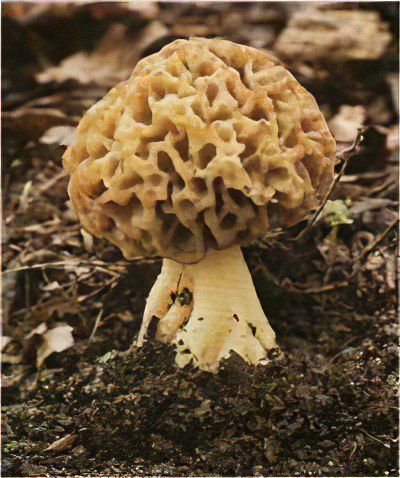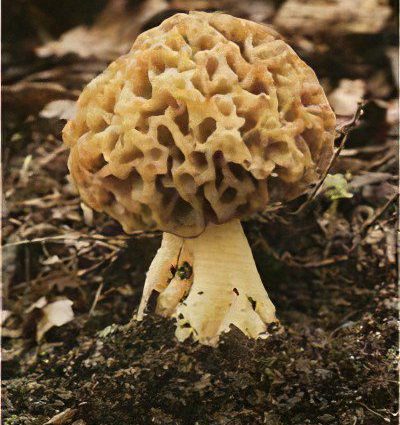Contents
Useful properties and application of morel mushroom
Botanical characteristics of the morel

Morel is a marsupial mushroom with a beautiful ovoid-rounded hat. The hat has a yellowish-brownish color and small cells that look like a honeycomb. The cylindrical hollow leg, as a rule, is always lighter than the cap. Morel boasts white flesh with a pleasant aroma and incomparable taste.
These mushrooms prefer deciduous and coniferous forests. They can be found in Australia, North America and, of course, Eurasia. Such early mushrooms appear immediately after the snow melts. They prefer soil that is rich in lime. Since these mushrooms cannot be consumed raw, they are considered conditionally edible. To neutralize toxic acids, morels are recommended to be boiled for at least 15 minutes or dried well.
Useful properties of morel
Morel contains various trace elements and vitamins, as well as a unique polysaccharide substance. Due to its composition, morels have a great effect on visual acuity. Various modern preparations based on morels not only strengthen the eye muscles, but also prevent the lens from becoming cloudy.
It should be mentioned that these mushrooms not only increase appetite, but also significantly enhance the work of the gastrointestinal tract. Morels are excellent at purifying blood and lymph. Along with this, the presented mushrooms are an excellent healing and tonic agent.
The use of morel
Since ancient times, morels have been used in the treatment of farsightedness and myopia, as well as in various diseases of the joints and rheumatism. They are shown to restore the immune system.
To restore vision and treat various diseases, it is recommended to regularly consume these mushrooms, and for at least 6 months. Before use, it is recommended to thoroughly clean them, soak in water for one hour, and then boil and rinse in running water.
Dried morels
Such a spring mushroom as morel can be easily dried for long-term storage, since it is hygroscopic. Suitable for storage in any dry and well-ventilated area. Keep in mind that mushrooms absorb moisture easily, so store them in cardboard boxes or heavy paper bags. From dried morels, an aromatic powder is prepared, which is an excellent seasoning for a wide variety of dishes, as well as an excellent medicine for the treatment of many diseases.
Morel ordinary
Morel appears in early spring in parks, deciduous forests and clearings. The height of its ellipsoidal hat with folds can reach 15 cm, and its diameter can reach 10 cm. Interesting irregularly shaped cells form in the folds of the hat. Its color varies from gray to ocher-brown.
Delicate light flesh has a wonderful aroma. The cylindrical hollow leg of the fungus at the base is slightly expanded, it often has a yellowish tint. When fully ripe, it becomes velvety and longitudinally wrinkled. Ellipsoid spores are usually smooth and colorless. Common morel grows only in well-lit places.
Morel edible
Edible morel has a hollow brownish leg and a chic elongated hat. Its waxy pulp is quite brittle, it has an interesting taste and pleasant aroma. There is an edible morel under bushes, in grassy places, on the ashes of fires, as well as on lawns, along roadsides, next to fields and in parks.
Often, these mushrooms can be harvested from March to the end of May. After 20 minutes of cooking, their toxic substances are neutralized, after which you can cook delicious dishes from them.
Morel conical
Morel conical is common in the tundra, in forest zones and mountains. This species grows from mid-spring to late May. He feels great in the fall. A beautiful conical hat about 4-6 cm high and about 3 cm thick fuses with the mushroom stem with its edges.
Inside, the olive-brown hat is hollow and has a mesh-cellular structure resembling a honeycomb of bees. The whitish cylindrical leg is also hollow inside and has pronounced longitudinal grooves. Tasty and fragrant pulp is slightly waxy, it breaks easily.
Contraindications to the use of morel
Do not forget that before use, such mushrooms must be boiled or dried. Also, be careful not to confuse them with poisonous morels. With proper and moderate use, morels will never harm the human body.










